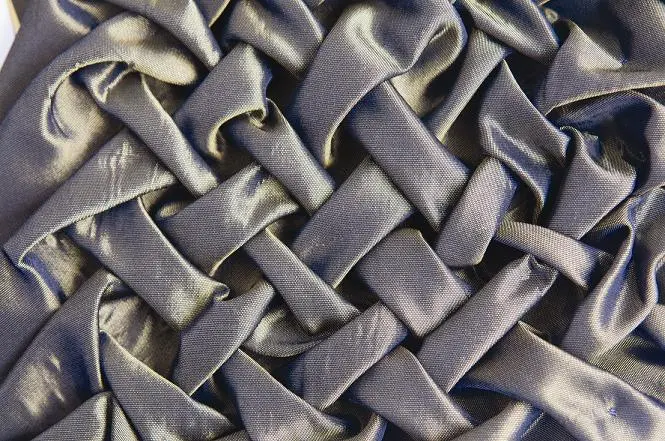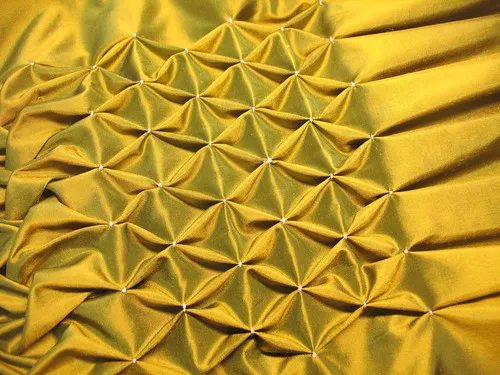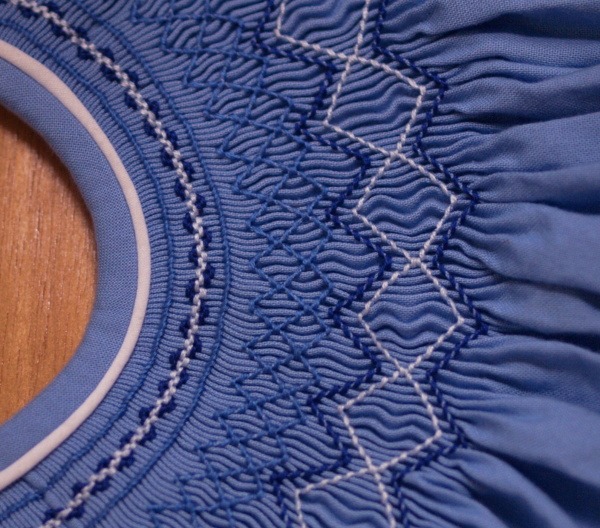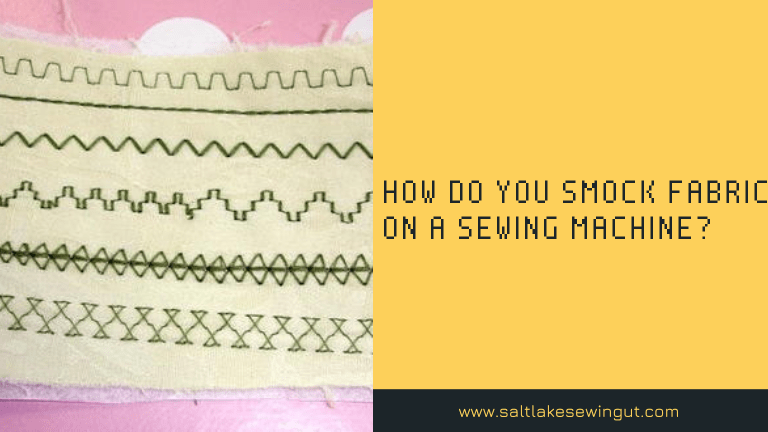This article will guide you through the process of smock fabric on a sewing machine. Sewing enthusiasts often seek creative ways to add texture and elegance to their projects. Smocking is a decorative sewing technique that achieves precisely that. Whether you’re a beginner or an experienced sewer, you’ll learn how to create beautiful smocked patterns to enhance your clothing or home décor.

What is Smocking?
Smocking is a form of embroidery that creates decorative patterns by gathering and stitching fabric in a controlled manner. It is commonly used to add texture and elasticity to garments. Smocked fabrics are not only visually appealing but also have a charming, gathered appearance.
Choosing the Right Fabric
Before you start smocking, select the right smock fabric for your project. Lightweight, natural fabrics like cotton, voile, or lawn work best. These fabrics gather and hold stitches well, making them ideal choices for smocking.

Preparing Your Sewing Machine
Ensure your sewing machine is clean and well-maintained.
Use a sewing machine needle suitable for lightweight fabrics.
Thread your machine with high-quality thread that matches your fabric.
Selecting the Correct Needle and Thread
Choose a needle designed for lightweight fabrics, preferably a ballpoint or universal needle. The thread should complement your fabric color, ensuring your smock fabric blends seamlessly with the garment.
Marking Your Fabric
Mark your fabric with a washable fabric marker or tailor’s chalk to create guidelines for your smocking. You can draw dots or use a grid pattern to help maintain even spacing.
Setting Up the Stitch
Set your sewing machine to a straight stitch or a decorative stitch, depending on the effect you want to achieve. A longer stitch length is preferable for smocking, as it allows for better gathering.
Smocking Techniques
Honeycomb Smocking
Honeycomb smocking is a classic technique that creates a beautiful geometric pattern. It involves stitching rows of cable stitches to form honeycomb-like shapes.
Cable Smocking
Cable smocking is another elegant technique that creates a cable-like effect on the smock fabric. It is achieved by stitching rows of cable stitches.
Wave Smock Fabric
Wave smocking produces flowing, wave-like patterns on the fabric. It is created by stitching rows of cable stitches in a curving, wave pattern.

Smock Fabric
Start smocking by sewing parallel rows of your chosen smocking technique across the marked fabric. Maintain even spacing between rows for a consistent and attractive result.
Securing The Smock Fabric Rows
After smocking, secure the rows by tying off the threads at the beginning and end of each row. This ensures that the smocked pattern remains intact.
Adding Embellishments
To enhance the look of your smocked fabric, consider adding embellishments like beads, sequins, or embroidery. These decorative elements can make your project truly unique.
Finishing Touches
Once you’ve finished smocking and adding embellishments, press your fabric gently to remove any creases or wrinkles. This gives your project a polished appearance.
Care and Maintenance
To maintain your smocked fabric, always follow the care instructions for the fabric you use. In general, hand washing and air-drying are recommended to preserve the delicate smocked stitches.

Creative Ideas for Smock Fabric
Smocked fabric can be used in various creative ways. Consider making children’s clothing, blouses, dresses, pillowcases, or even decorative table linens.

Conclusion
Smocking fabric on a sewing machine is a versatile and artistic skill that can elevate your sewing projects. With the right fabric, sewing machine, and techniques, you can create beautifully smocked patterns. Experiment with different smocking styles and have fun adding your unique touch to your creations.
Is smoking only for clothing?
No, you can use smocked fabric for a wide range of projects, including home décor items like pillowcases and table linens.
What types of fabrics are best for smocking?
Lightweight natural fabrics such as cotton, voile, and lawn work best for smocking.
Can I use a regular sewing machine for smocking?
Yes, you can use a regular sewing machine with the appropriate needle and settings for smocking.
Is smocking suitable for beginners?
Yes, beginners can learn smocking, but it may require some practice to master the techniques.
What is the history of smocking in fashion?
Smocking has a rich history in fashion, dating back to the Middle Ages. It was originally used to provide elasticity in garments while also adding decorative elements.

